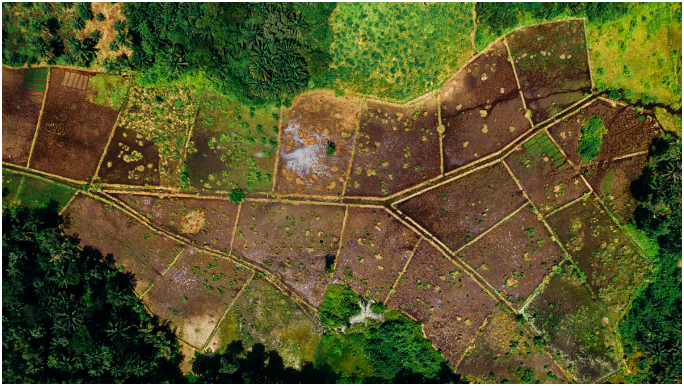The process of land conversion is primarily carried out to change agricultural land into non-agricultural land. In this way, the landowners are able to use the barren agricultural lands for other purposes such as industrial, commercial, or residential. If you are planning to engage in such conversion in Chennai, you should know the nitty-gritty of the rules, charges applicable, and documents required for a change of land use in the city.

Agricultural lands cannot be utilised for development purposes without converting the land properly. As per the provisions of the Tamil Nadu Change of Land Use Rules, 2017, the land that is used for agriculture must be converted into non-agricultural land before using it for the development processes.
Rules for change of land use
The Tamil Nadu Change of Land Use Rules, 2017, oversees the entire process of land conversion from agricultural to non-agricultural in non-planning areas. The process is deemed complete after the authorities verify the land and the landowner pays the premium amount. In case you want to apply for a change of land use in Chennai, there are certain rules and guidelines to follow in order to ensure a trouble-free conversion. (Informations only.com)
Charges for ‘change of land use’ in Chennai
The landowner who wants to convert the land from agricultural to non-agricultural will have to pay a non-refundable scrutiny fee of about Rs 1,000 to the local authority. Also, the land-use conversion charge at the rate of three percent of the entire market value of the property is fixed under the Indian Stamp Act of 1899. The landowner will have to pay the amount to the local authority, which will be deposited to the Government Head of Account and Grant Permission to carry out the procedure.
Documents required for change of land use in Chennai
For obtaining the Change of Land Use or CLU Certificate, the landowner will have to attach a few important documents that are mentioned below.
• A copy of the sale deed, lease deed, as well as the power of attorney that is self-attested by the applicant
• Certificate of ownership that is collected from the Executive Officer, Town Panchayat or Commissioner, and the Municipal Corporation in the case of some urban local bodies
• In the case of certain rural local authorities, a certificate of ownership is to be collected from the BDO or Block Development Officer of Block Panchayat/Village Panchayat
• FMB or Town Survey sketch
• Site plan inappropriate scale of 1:400/800/1600
• Patta, Chitta, or Town Survey Land Records (TSLR) with the name of the owner
• Proposed layout for subdivision plan
• A plan that shows all the existing developments within a 500-meter radius of the land
• Encumbrance certificate for 13 years issued not before 30 days from the date of application submission
• In case the land is within 30 meters of the railway property, a NOC or No-Objection Certificate from the railway department is important.
Procedure for change of land use in Chennai
For conversion of agricultural land to non-agricultural land in Chennai, follow the procedure below:
Step 1: Fill out the application form with the help of the supporting documents that have been mentioned above and send it to the local authority.
Step 2: The local authority acknowledges the application within seven days and sends it to the Director.
Step 3: The Director reviews the application and obtains the prior concurrence of the Collector in the case of wetlands. For drylands, a report from the Joint Director of Agriculture is obtained.
Step 4: The next step is the verification by the Collector, where they conduct a site visit to check if the land falls under the Change of Land Use section or not. The Collector ensures that the irrigation canals, distribution channels, and other drains are not affected due to the proposed development.
Step 5: Specifics such as revenue records, existing development around the land, irrigation sources, and the present cultivation status will be checked by the Deputy Director of Town and Country Planning.
Step 6: Verification is also done by the Director of Agriculture for certain drylands. The Director will check whether the land is any public water body or has a drainage system underneath.
Step 7: Only when all the authorities are satisfied with the verification, the local authority would receive the concurrence of the Director.
Landowners may pay the CLU charges, and within a month, the Land Conversion order is received. Further, the Revenue Officer will make the necessary entries to change the revenue records. (Informations only.com)